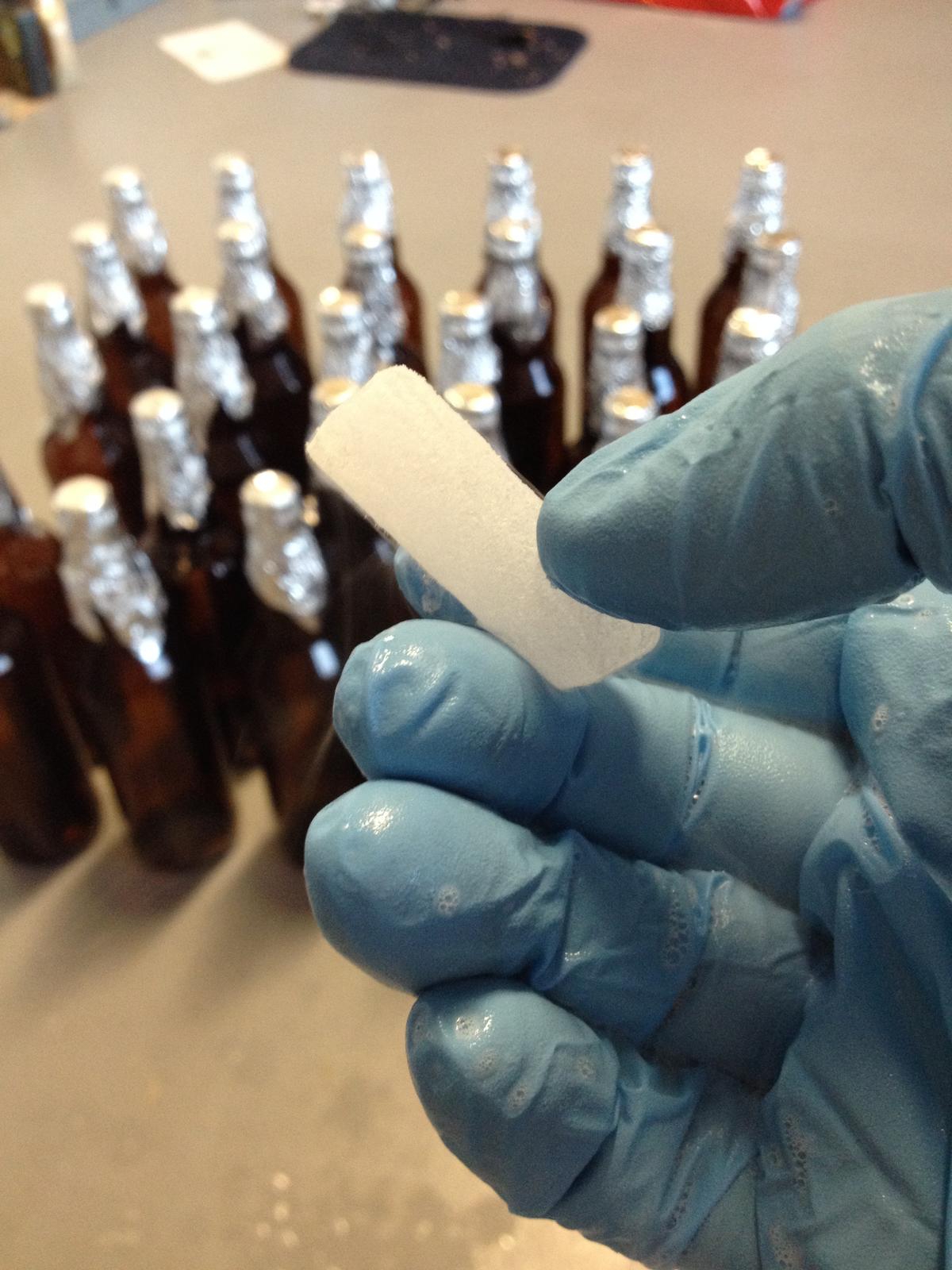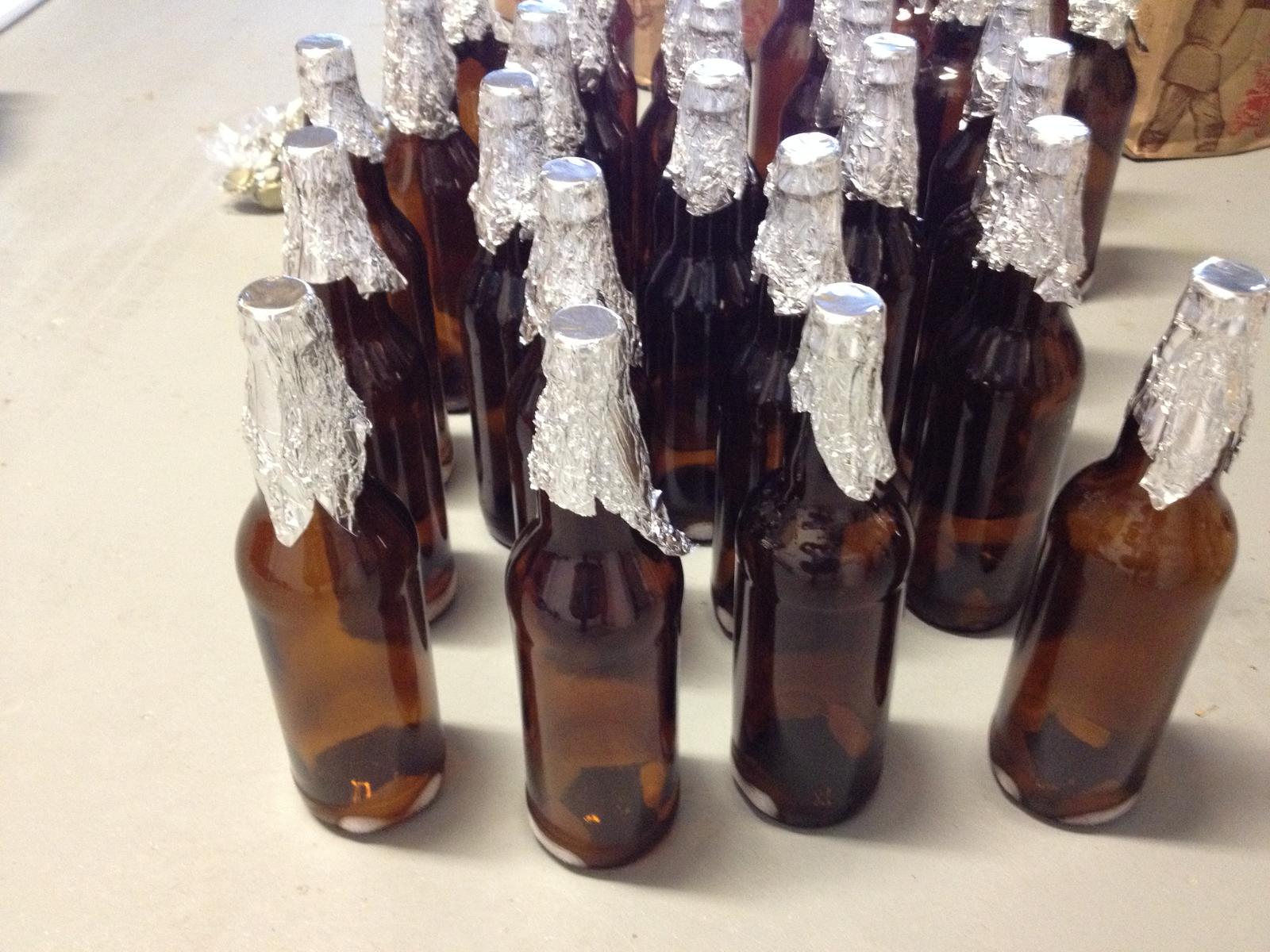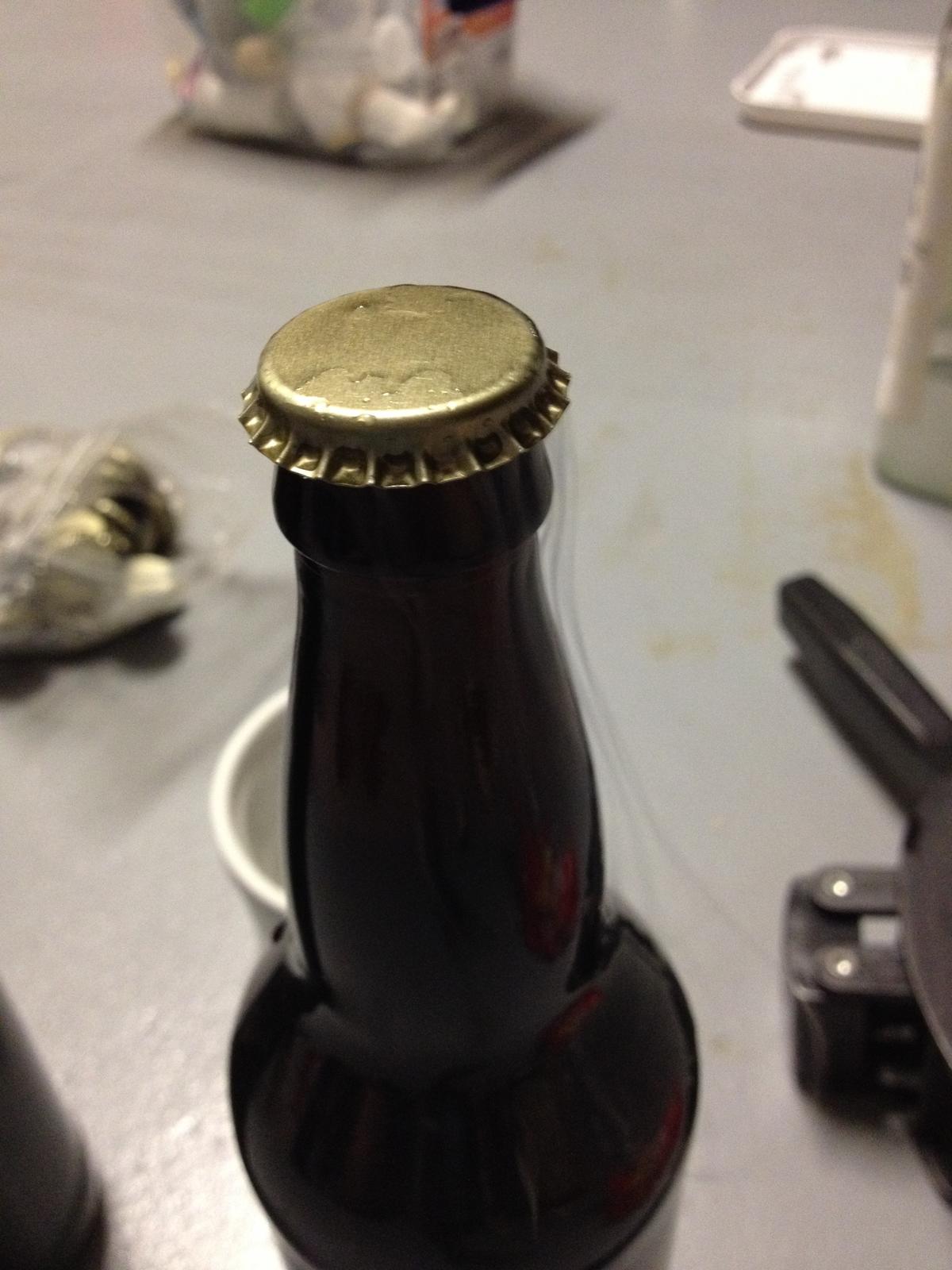PlinyTheMiddleAged
Well-Known Member
- Joined
- Jan 9, 2014
- Messages
- 377
- Reaction score
- 106
All,
I've posted in a few different threads about what I do to minimize the exposure of my beers to oxygen. The background is that I had what I thought was pretty decent beer based on tasting what was in the bottling bucket; however, three weeks later, I'd have pretty nasty beer in my glass. Although I was shooting for IPAs, I was getting off colored (dark) crummy tasting beers. After discussing my problem with a local pro-brewer and tasting beers with him of various ages, I began my effort to minimize O2 exposure to see if this was my problem. However, I had no CO2 equipment and I did not want to spend a bunch of money if this was not my problem. So, I settled on using dry ice. Below is an outline of my bottling process.
Step 1: Sanitize bottles. I use my oven to bake my pre cleaned bottles. I cover the mouth of each bottle with aluminum foil and bake at 350ºF for about 1.5 hours. I then turn off the oven and leave the bottles to come back down to room temperature - usually overnight.
Step 2: Flush bottles, bottling bucket, hoses, wands, etc with CO2. I peel back the foil on the bottle, drop a good size piece of dry ice into each sterilized bottle, put the foil back in place, and let the dry ice sublimate. Honestly, I do not know how many volumes of CO2 I am flushing these bottles with - I think, based on my guesses of the dimensions of the pellet in the picture, that the chunk of dry ice weighed about 11 grams. This 11 grams will produce about 11 pints of CO2.
I also drop a couple of good handfuls of pellets in the bottling bucket - again, I don't measure how much I have used, but I'm pretty generous. I connect the sanitized hoses, wand, and valve to the bucket and let the CO2 flow through it all.
I let all of the above sit until the dry ice in the bottles and in the bucket has sublimated.
Step 3: Siphon the beer to the CO2 flushed bottling bucket. OK - here is where my process fails. I can't transfer without introducing oxygen into the fermenter. However, I know that when the beer gets to the bottling bucket, the CO2 protects the beer from further exposure. Sometimes I prime with carb drops; sometimes I use a priming solution.
Step 4: Fill the bottles with beer. Pretty simple. I am moving the beer from the CO2 flushed bottling bucket to a CO2 flushed bottle. Yes - when I am draining beer from the bottling bucket, I am letting air in; again, this process is not perfect.
Step 5: Drop a very small piece of dry ice into the now filled bottle. I do this to purge the head space in the bottle that is introduced when I remove the wand from the bottle. If the piece that you use is too big, you'll make a lot of CO2 bubbles that will overflow the bottle - so don't use too much. Place the cap on the bottle but do not crimp it down.
Step 6: After the dry ice has sublimated, crimp the top down.
Is this process perfect? Nope. Is it easier than buying a CO2 bottle, a keg, and all the associated fixtures and simply kegging? Probably not. However, if you think that you have problems with oxidation and you don't want to spend a bunch of money to see if that has a chance of solving your problem, give the dry ice a try. It has significantly improved my IPAs.






I've posted in a few different threads about what I do to minimize the exposure of my beers to oxygen. The background is that I had what I thought was pretty decent beer based on tasting what was in the bottling bucket; however, three weeks later, I'd have pretty nasty beer in my glass. Although I was shooting for IPAs, I was getting off colored (dark) crummy tasting beers. After discussing my problem with a local pro-brewer and tasting beers with him of various ages, I began my effort to minimize O2 exposure to see if this was my problem. However, I had no CO2 equipment and I did not want to spend a bunch of money if this was not my problem. So, I settled on using dry ice. Below is an outline of my bottling process.
Step 1: Sanitize bottles. I use my oven to bake my pre cleaned bottles. I cover the mouth of each bottle with aluminum foil and bake at 350ºF for about 1.5 hours. I then turn off the oven and leave the bottles to come back down to room temperature - usually overnight.
Step 2: Flush bottles, bottling bucket, hoses, wands, etc with CO2. I peel back the foil on the bottle, drop a good size piece of dry ice into each sterilized bottle, put the foil back in place, and let the dry ice sublimate. Honestly, I do not know how many volumes of CO2 I am flushing these bottles with - I think, based on my guesses of the dimensions of the pellet in the picture, that the chunk of dry ice weighed about 11 grams. This 11 grams will produce about 11 pints of CO2.
I also drop a couple of good handfuls of pellets in the bottling bucket - again, I don't measure how much I have used, but I'm pretty generous. I connect the sanitized hoses, wand, and valve to the bucket and let the CO2 flow through it all.
I let all of the above sit until the dry ice in the bottles and in the bucket has sublimated.
Step 3: Siphon the beer to the CO2 flushed bottling bucket. OK - here is where my process fails. I can't transfer without introducing oxygen into the fermenter. However, I know that when the beer gets to the bottling bucket, the CO2 protects the beer from further exposure. Sometimes I prime with carb drops; sometimes I use a priming solution.
Step 4: Fill the bottles with beer. Pretty simple. I am moving the beer from the CO2 flushed bottling bucket to a CO2 flushed bottle. Yes - when I am draining beer from the bottling bucket, I am letting air in; again, this process is not perfect.
Step 5: Drop a very small piece of dry ice into the now filled bottle. I do this to purge the head space in the bottle that is introduced when I remove the wand from the bottle. If the piece that you use is too big, you'll make a lot of CO2 bubbles that will overflow the bottle - so don't use too much. Place the cap on the bottle but do not crimp it down.
Step 6: After the dry ice has sublimated, crimp the top down.
Is this process perfect? Nope. Is it easier than buying a CO2 bottle, a keg, and all the associated fixtures and simply kegging? Probably not. However, if you think that you have problems with oxidation and you don't want to spend a bunch of money to see if that has a chance of solving your problem, give the dry ice a try. It has significantly improved my IPAs.








